Affiliate links on Android Authority may earn us a commission. Learn more.
OnePlus 11 vs Samsung Galaxy S23: Which should you buy?

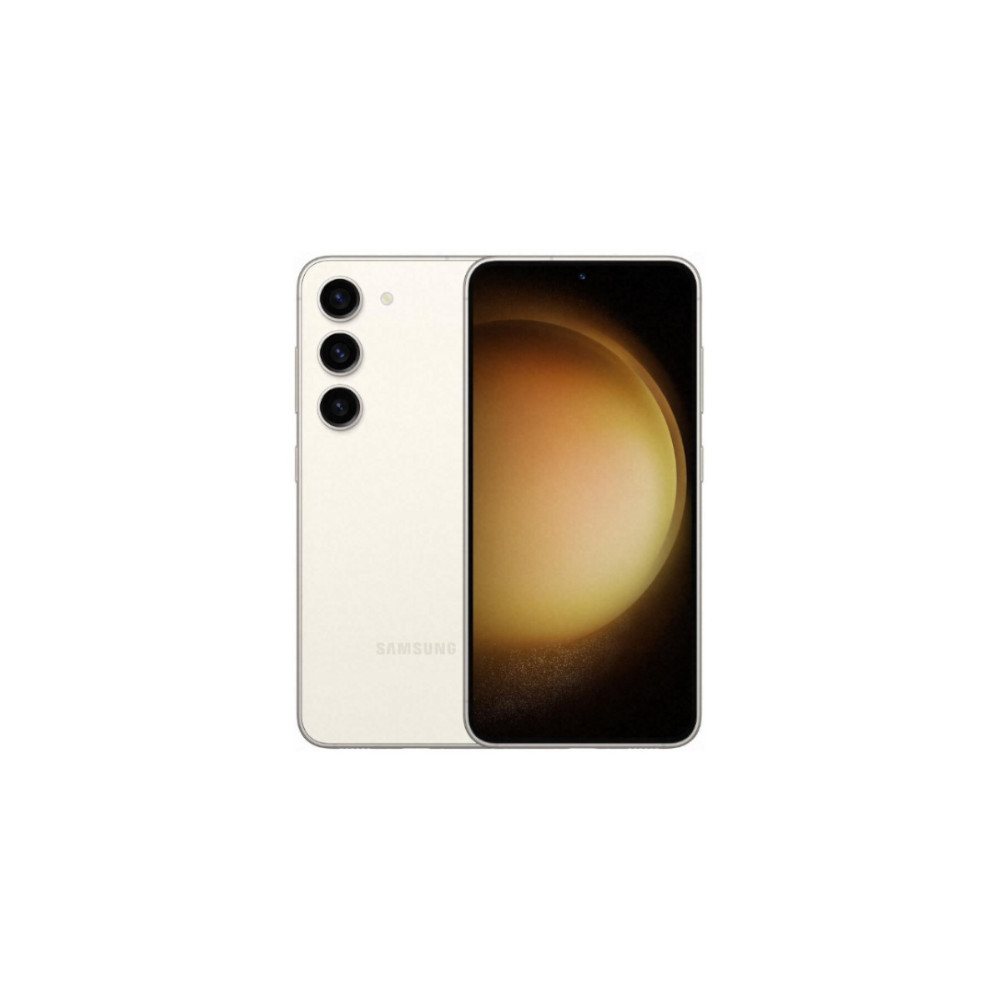

Samsung might be the largest player in the Android smartphone game, but OnePlus is the brand that made flagship killers a thing. The OnePlus 11 continued this tradition. The BBK sub-brand returned to basics and kept it lean with a single flagship to carry it through 2023. On the other side of the ring is the Samsung Galaxy S23, the Korean company’s latest compact flagship that plays in the same value flagship space as OnePlus. Both phones have their merits and have received a serious dose of refinement, making picking one over the other ever so hard. Follow along as we help you navigate the waters and settle the OnePlus 11 vs Samsung Galaxy S23 debate.
OnePlus 11 vs Samsung Galaxy S23: At a glance
The OnePlus 11 and Samsung Galaxy S23 might play in the same relative space, but the two phones are poles apart in their approach toward design and even hardware to a degree.
- The OnePlus 11 is cheaper than the Galaxy S23.
- Both phones sport a Qualcomm Snapdragon 8 Gen 2 chipset, but the Galaxy S23 comes with a modified version of it for faster performance.
- The OnePlus 11 can be had with more RAM.
- The OnePlus 11 has a bigger battery and supports faster charging.
- The Samsung Galaxy S23 lets you go further with a 3x telephoto zoom compared to the 2x lens on the OnePlus.
- The Galaxy S23 has wireless charging and a better IP rating for water/dust protection.
- The OnePlus 11 opts for an older Gorilla Glass 5 solution for protection, while the Samsung Galaxy S23 offers Gorilla Glass Victus 2.
OnePlus 11 vs Samsung Galaxy S23 specs
| OnePlus 11 | Galaxy S23 | |
|---|---|---|
Display | OnePlus 11 6.7-inches AMOLED Edge display (curved) QHD+ resolution (3,216 x 1,440) 120Hz refresh rate (1Hz to 120Hz), LTPO 3.0 HDR10+ 1300 nits peak brightness | Galaxy S23 6.1-inch Dynamic AMOLED Flat display 19.5:9 aspect ratio FHD+ resolution (2,340 x 1,080) 120Hz adaptive refresh rate |
Processor | OnePlus 11 Qualcomm Snapdragon 8 Gen 2 | Galaxy S23 Qualcomm Snapdragon 8 Gen 2 |
GPU | OnePlus 11 Qualcomm Adreno 740 | Galaxy S23 Qualcomm Adreno 740 |
RAM | OnePlus 11 8GB or 16GB LPDDR5X | Galaxy S23 8GB |
Storage | OnePlus 11 128GB UFS 3.1, or 256GB UFS 4.0 No microSD card support | Galaxy S23 128GB or 256GB No microSD card support |
Battery and charging | OnePlus 11 5,000mAh battery 80W wired charging (US) / 100W wired charging (Rest of the world) Relevant charger in the box | Galaxy S23 3,900mAh battery 25W wired charging 15W wireless charging No charger in box |
Cameras | OnePlus 11 REAR: - 50MP main 1.0 μm, f/1.8 1/1.56-inch Sony IMX890 sensor OIS and EIS - 48MP ultrawide μm, f/2.2 115-degree FoV 1/2-inch Sony IMX581 sensor - 32MP telephoto 2x optical zoom f/2.0 1/1.56-inch Sony IMX709 sensor FRONT: - 16MP f/2.45, 1.0 μm, Sony IMX471 | Galaxy S23 REAR: - 50MP wide 1.0μm, ƒ1.8 85-degree FoV - 12MP ultrawide 1.4μm, ƒ2.2 120-degree FoV - 10MP telephoto 1.0μm, ƒ2.4 36-degree FoV 3x optical zoom FRONT: - 10MP wide ƒ2.2 80-degree FoV |
Video | OnePlus 11 Rear: 8K at 24fps (main lens only) 4K at 30/60fps Front: 1080p at 30fps | Galaxy S23 Rear: 8K at 24/30FPS 4K at 30/60fps Front: 4K at 30/60fps |
Audio | OnePlus 11 Stereo speakers Triple mics No 3.5mm port | Galaxy S23 Stereo speakers Triple mics No 3.5mm port |
Connectivity | OnePlus 11 5G (Sub6) Wi-Fi 6 Bluetooth 5.3 NFC support | Galaxy S23 5G (Sub6) Wi-Fi 6 Bluetooth 5.2 NFC support |
Security | OnePlus 11 Optical under-display fingerprint sensor 5 years of security updates | Galaxy S23 Optical under-display fingerprint sensor 5 years of security updates |
IP rating | OnePlus 11 IP64 | Galaxy S23 IP68 certified |
Software | OnePlus 11 Android 13 OxygenOS | Galaxy S23 Android 13 One UI 5.1 |
Materials | OnePlus 11 Gorilla Glass Victus on the front, Gorilla Glass 5 on the back Aluminum frame Alert Slider | Galaxy S23 Gorilla Glass Victus 2 on the front and back Aluminum frame |
Dimensions and weight | OnePlus 11 163.1 x 74.1 x 8.5 mm 205g | Galaxy S23 146.3 x 70.8 x 7.6mm 168g |
Colors | OnePlus 11 Titan Black, Eternal Green | Galaxy S23 Phantom Black, Cream, Green, Lavender, Graphite, Lime |
The OnePlus 11 and Samsung Galaxy S23 were some of the best Android phones in 2023. While they might seem to target the same market segment, there are subtle differences strewn across the entire package, and that’s before we talk about the obvious difference in size.
The size difference between the OnePlus 11 and the Galaxy S23 is the obvious one. The OnePlus 11 sports a 6.7-inch display against the smaller 6.1-inch panel on the Galaxy S23. There’s also a difference in resolution, with the Galaxy S23 sporting a Full HD+ resolution, while the OnePlus 11’s panel comes in at QHD+. The display of the OnePlus 11 is also curved on the sides, which can either be a good or a bad thing, depending on your preference.
While both phones come equipped with a Snapdragon 8 Gen 2 chipset, the one that’s powering the Samsung Galaxy S23 is modified for improved performance. We’ve tested the Snapdragon 8 Gen 2 for Galaxy, and here are our results. Samsung’s chipset beats OnePlus in pure performance, when looking at the benchmarks. We have to say the difference isn’t noticeable when actually using the devices, though.
However, OnePlus wins out with the sheer array of options it offers. The base variant kicks things off with 8GB of RAM and 128GB of storage, and users can opt for 256GB or 512GB of storage with options for 12GB or 16GB of RAM on the middle-of-the-line model. The Galaxy S23, on the other hand, keeps it simple with a consistent 8GB of RAM across the board and options for 128GB, 256GB, or 512GB of storage.
The OnePlus 11 doesn't have wireless charging.
The gap between the two phones widens when it comes to additions or omissions like IP ratings and wireless charging. For example, the OnePlus 11 has a basic IP54 rating, offering splash resistance but not much protection against immersion. The Galaxy S23, on the other hand, sports a full-fledged IP68 rating. The OnePlus 11 also misses out on table stakes like wireless charging. It has no wireless charging at all. Meanwhile, the Galaxy S23 can handle 15W wireless charging.
When it comes to software, both phones launched with Android 13 and will get four OS updates and five years of security updates. The Galaxy S23 comes with One UI, while OnePlus has the company’s OxygenOS on board. There are a lot of differences between them, which you can check out in our dedicated One UI vs OxygenOS post. Both are great Android skins, so which one is better comes down to personal choice.
There are other differences between the two phones, mainly when it comes to cameras and batteries. We have dedicated sections for those below.
The OnePlus 11 dwarfs the Galaxy S23
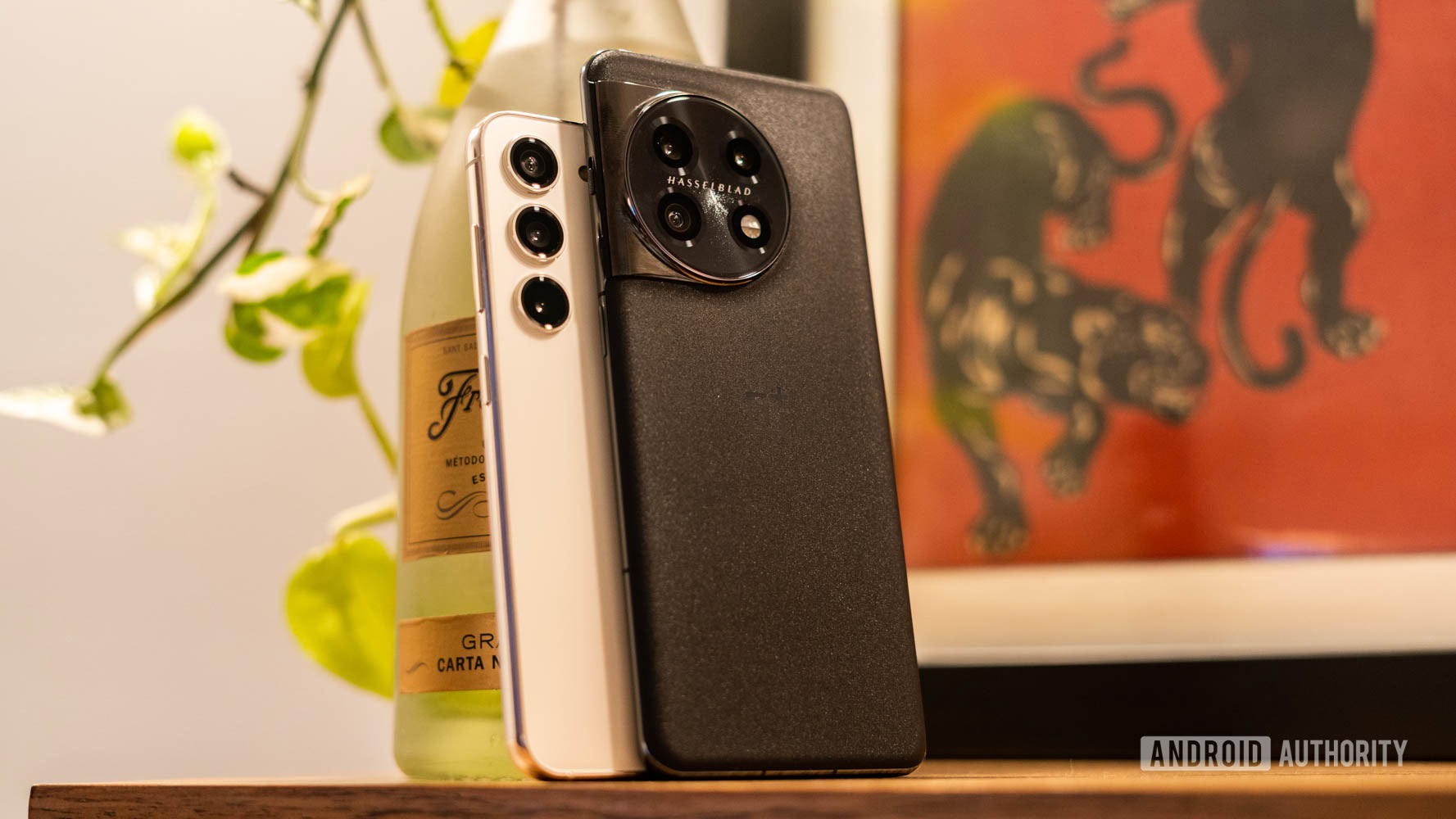
There’s a clear and distinct difference between the size of the OnePlus 11 and the Galaxy S23. While the former approaches standard flagship dimensions with its large 6.7-inch AMOLED display, the Galaxy S23 is geared toward users who prefer something a bit more petite. Packing a 6.1-inch AMOLED screen, the Galaxy S23 is amongst the rare breed of pocket-friendly full-specced flagships. For users who want a larger display, Samsung offers the Galaxy S23 Plus. If you’re looking for something smaller instead, we do have a list of the best small phones available. However, that phone operates in a very different price range.
The Galaxy S23 is significantly more pocketable than the OnePlus 11 on account of its smaller display.
Switching over to absolute dimensions, the OnePlus 11 clocks in at 163.1 x 74.1 x 8.5mm and a hefty 205g. Meanwhile, the Galaxy S23 trims down the dimensions on all fronts and measures 163.1 x 74.1 x 8.5mm. The smaller size also means a much lighter phone that weighs a mere 168 grams.
The OnePlus 11 is no behemoth. In fact, the tall aspect ratio lends itself nicely to single-handed use. However, compared to the Galaxy S23, it is undoubtedly a handful. Samsung’s smallest device in its flagship lineup is the practical choice for anyone who prefers portability over absolute screen size. The flattened display also lends itself greatly to comfort, and the phone will easily slip into the skinniest jeans. If you’re looking for something smaller, we also have a list of the best small phones available.
While the OnePlus 11 opts for a cyclopean circle with three camera lenses and a flash embedded in it, the Galaxy S23 opts for a much more understated design language. Gone is the segregated camera module, and instead, this year, Samsung has opted for three standalone lenses just like the Galaxy S23 Ultra, making it a perfect match for the rest of the Galaxy flagship lineup. Similarly, the OnePlus 11 opts for a curved, matte-finished back panel to better fit in the palm of the hand, while Samsung has gone for a flat glass back with the S23. Both feel suitably premium, although the Galaxy S23’s construction leans towards a more premium appeal.
Both phones are distinctive as well as visually appealing, and ultimately, the choice between the two will boil down to your preference — portability or sheer screen real estate.
The Samsung Galaxy S23 has the better camera

The OnePlus 11 and Samsung Galaxy S23 are more similar than different in the camera department. To start, both phones have the same layout — a primary camera flanked by additional ultrawide and telephoto sensors. There are no superfluous macro or depth sensors here.
Both phones employ a 50MP sensor as the primary camera. The OnePlus 11 switches out the IMX766 sensor from the OnePlus 10T for a 50MP IMx890. In day-to-day use, this shouldn’t make much of a difference. On the other hand, Samsung continues to use the same layout across all three cameras as it did with the S22 lineup. That’s no bad thing, as we lauded the camera setup on the S22 and S22 Plus for its superior imaging capabilities. In 2023, Samsung touted additional features like better low-light photography as part of its Nightography feature set and improved AI processing to eke out more performance from the same sensor.
The OnePlus 11 brings more megapixels to the fight, but ultimately software processing is the deciding factor.
The OnePlus 11 steps forward in sheer information-gathering capabilities with its secondary cameras. The 48MP ultrawide sensor is a cut above the 12MP shooter on the Galaxy S23. It was meant to allow it to perform significantly better in poorly lit situations. That said, we found low-light performance to be rather lacking in our OnePlus 11 review.
On paper, the OnePlus 11 has a superior 32MP sensor mated to its telephoto lens. However, that lens tops off at just 2x zoom. The Galaxy S23, on the other hand, pairs its 10MP camera sensor with a 3x lens for added reach.
As far as selfie cameras go, the OnePlus 11 deploys a familiar 16MP sensor. The Samsung Galaxy S23’s 12MP selfie shooter, however, offers additional capabilities like the ability to shoot 4K video at 30 or 60FPS. While both phones have capable hardware, OnePlus has traditionally output rather lackluster images despite the cutting-edge specs, and we found this to be the case with the OnePlus 11.
Both phones offer a full suite of camera additions and a dedicated pro mode that will let you go above and beyond the automatic settings.
If you want a better camera, the Samsung Galaxy S23 has the OnePlus 11 beat by a mile.
All things considered, though, the specs are just numbers and letters on a sheet. They don’t really tell the whole story, and that’s what we found in our reviews of both phones. Samsung has dramatically better cameras than the OnePlus 11. In fact, the Samsung Galaxy S23 series had some of the best camera systems in 2023.
Meanwhile, we weren’t fans of the camera performance on the OnePlus 11. Colors were often a hit or miss, low-light photos were awful, and zoom capabilities were nothing to write home about. If you want a better camera, the Samsung Galaxy S23 has the OnePlus 11 beat by a mile.
Both phones have equally good battery life
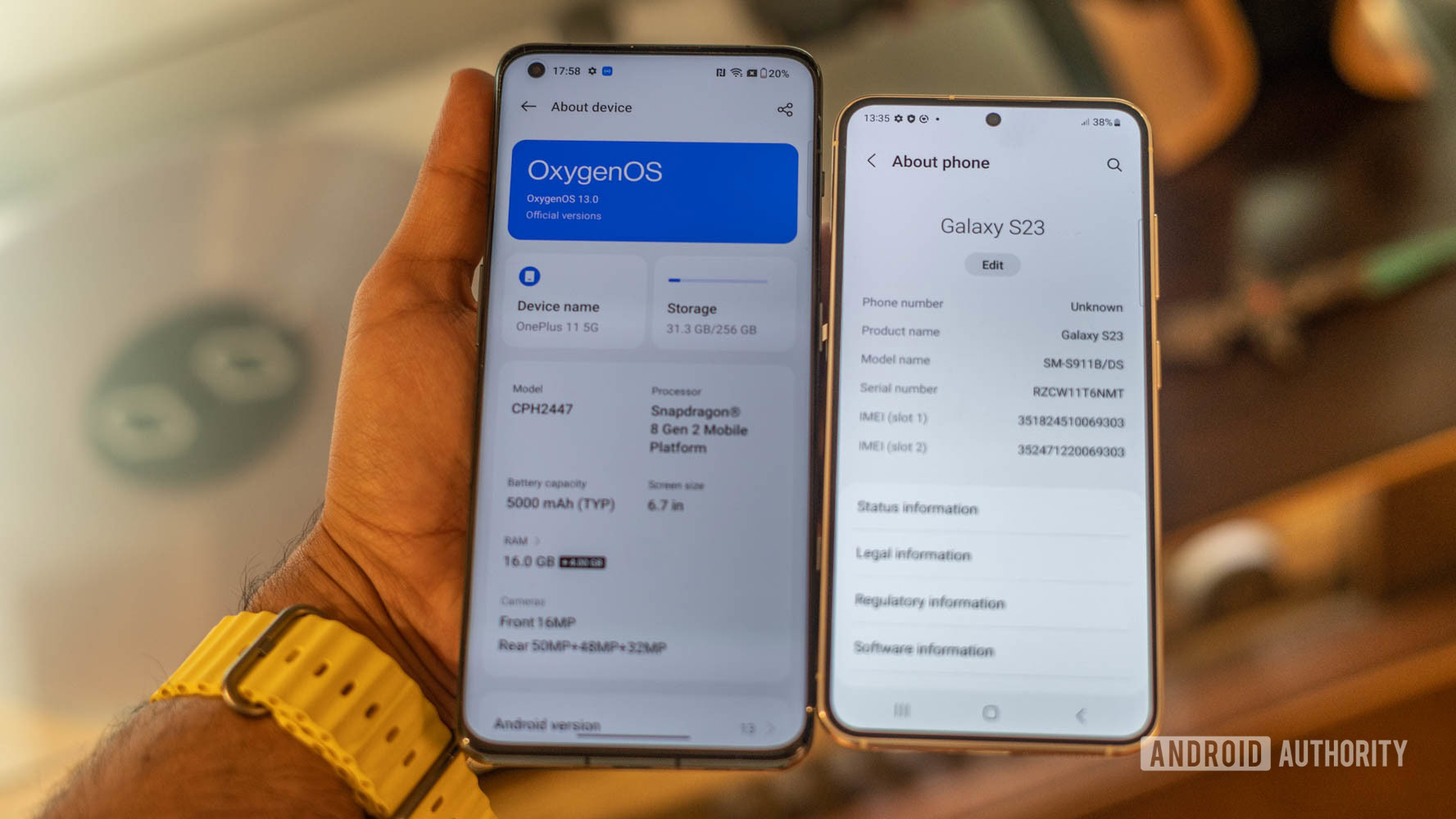
The OnePlus 11 and Galaxy S23 play in very different demographics as far as size is concerned, so it is hard to draw a direct correlation between the battery capacities of the two phones. That said, OnePlus is sticking to its tried and tested 5,000mAh cell, which is good for almost two days of moderate use.
Samsung, on the other hand, upped its battery capacity in 2023. The Galaxy S23 goes from 3,700mAh on the S22, to 3,900mAh on the S23. Coupled with the more power-efficient Snapdragon 8 Gen 2 chipset and a smaller display, overall longevity is much better, though not quite in the same league as the OnePlus 11.
The larger battery and smaller display on the Galaxy S23 should allow it to match up with the OnePlus 11's battery life.
After testing both devices, we found that the Galaxy S23 is an outstanding performer in terms of battery life. We were able to make it last about a day and a half on a single charge. The OnePlus 11 doesn’t fall behind, though. We were able to use it for two days. But we still feel the Galaxy S23 is more efficient, as it accomplishes great battery life with a smaller battery.
Where the OnePlus truly pulls ahead is in charging speeds. The phone ships with 100W support internationally, and throttles it down to 80W in North America, which will get you a full charge in around 30 minutes, according to our testing. The Galaxy S23 peaks at 25W wired charging, which will give you a 100% top-off in about 80 minutes. You do, however, get conveniences like 15W wireless charging and 4.5W reverse wireless charging with the Galaxy S23, which the OnePlus 11 doesn’t have.
Price and availability
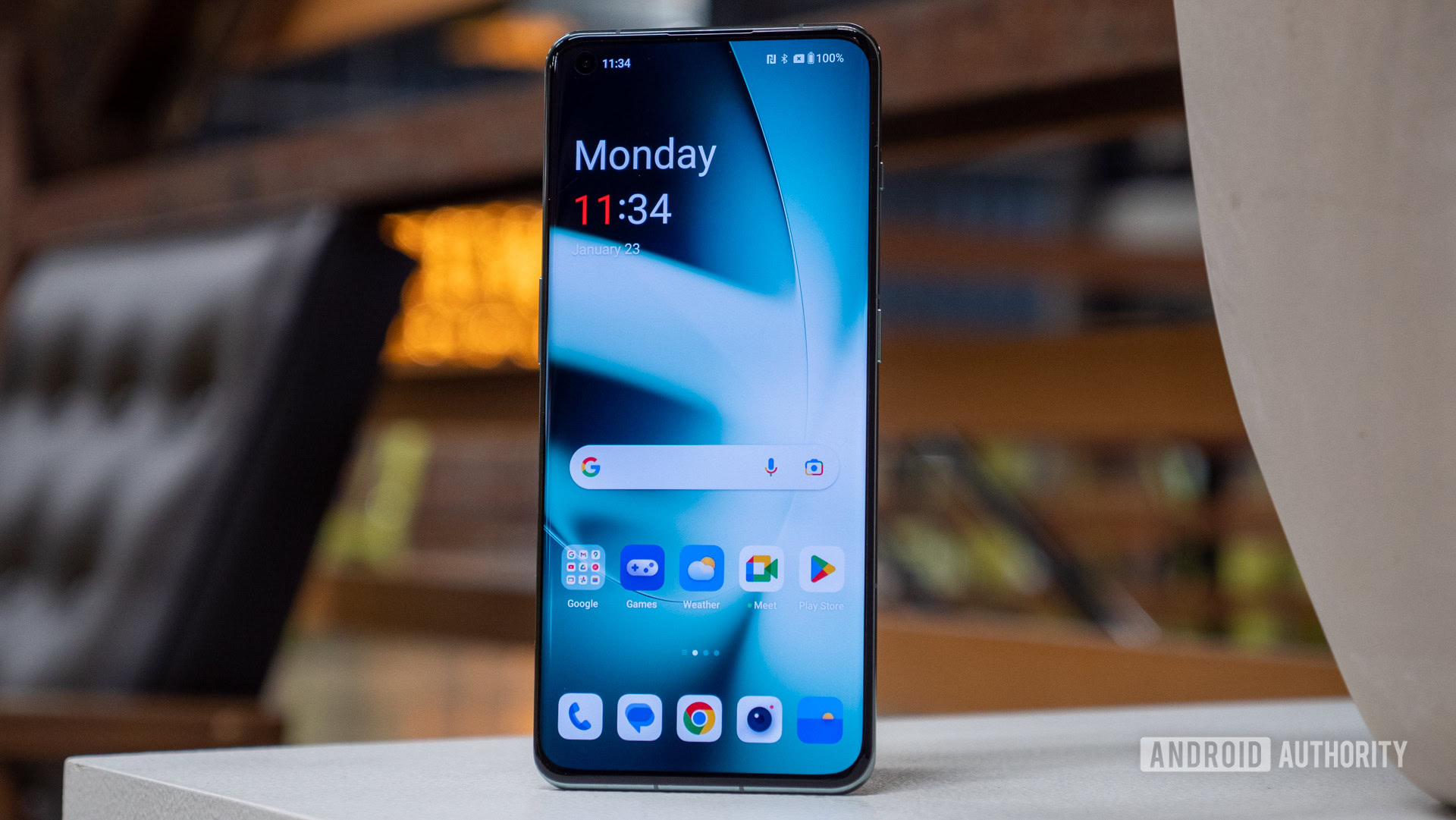
Samsung Galaxy S23 price:
- 8GB/128GB: $799
- 8GB/256GB: $849
OnePlus 11 price:
- 8GB/128GB: $699
- 16GB/256GB: $799
The OnePlus 11 shaves $100 off the starting price of Samsung’s Galaxy S23-series with its $700 price tag. The high-end version of the OnePlus 11, with 16GB of RAM and 256GB of storage, costs the same as the entry-level Samsung Galaxy S23.
That said, it’s also important to consider both devices now have successors; the Samsung Galaxy S24 and the OnePlus 12. This means the previous-gen devices will often be found at pretty significant discounts. If you look for these devices brand new, you can find the Galaxy S23 as low as about $650, while we’ve seen the OnePlus 11 going for about $550 in the same state.
We have a direct comparison between the Samsung Galaxy S24 and the OnePlus 12, if you’re interested in upgrading.
Which phone should you buy?
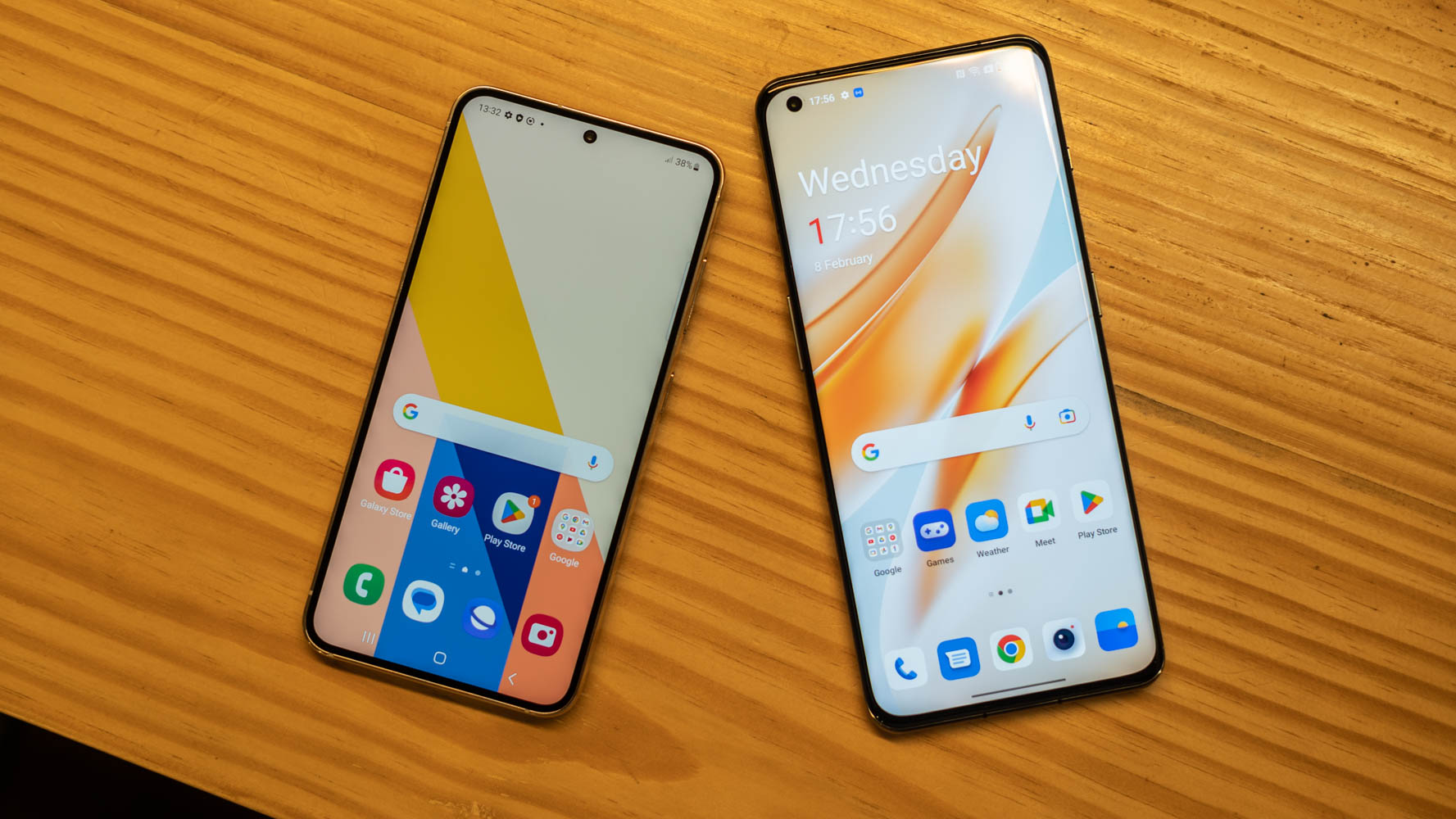
Deciding between the OnePlus 11 and the Samsung Galaxy S23 largely depends on what you value most — value or the overall package. OnePlus offers a bright, good-looking panel, all the power you need, and ultra-quick charging. The camera package is not great, but it will please the average user looking to grab quick snaps on the go. All that at a price that is hard to beat.
Both phones stand out as excellent options, and the chief deciding factor will be your preference for size and form factor.
The Samsung Galaxy S23, on the other hand, is for the user who cares more about the experience and overall package. The compact size, a personal preference for sure, is part of a diminishing breed of comfortably sized smartphones. The screen itself was amongst the finest you could get on any smartphone. Add to that everyday niceties like an IP68 rating and wireless charging, and the phone starts making a lot of sense. Both phones are at par on paper as far as performance goes, but Samsung goes the extra mile with well-thought-out software additions. Not to mention, it has an amazing camera system. Both phones are guaranteed to get four years of major software updates and five years of security patches.
OnePlus 11 vs Samsung Galaxy S23: Which would you rather buy?
As mentioned earlier, the primary deciding factor in your purchase decision will be your preference for the phone’s size. Unless you specifically need or want wireless charging or an IP68 rating, the two phones are well-matched and not too far apart in pricing.

Blazing-fast wired charging
Excellent software promise
Now, if you are looking for a more affordable Samsung phone, there’s also the Samsung Galaxy S23 FE ($599.99 at Amazon). While the specs aren’t as cutting edge, it offers a nice high-end experience, wireless charging, and an IP68 rating. It also starts at $600, making it cheaper than both phones we’re comparing here.